
LAVA 1.0 Content
-
Posts
2,739 -
Joined
-
Last visited
-
Days Won
1
Content Type
Profiles
Forums
Downloads
Gallery
Posts posted by LAVA 1.0 Content
-
-
-
QUOTE(bono02 @ Nov 20 2007, 11:38 AM)
I am thinking of buying incremental, with 3600 resolution, open collector type. I read that the motioncontroller can distinguish a signal with 100ns width. What do you think about it, is it good enough?
This depends on your application, I can not say if 3600 are just fine or not...
The motion controller (MC) makes a 4 x of your encoder pulses. (If you have a A and B signal)
That mean if you have 3600 counts per revolution, the MC will use 14'400 steps per revolution...
I use encoders from 500 to 10'000 pulses per revolution...
So you have to calculate the resolution you would like to have and then you can choose the right encoder.
We usually use an absolute and an incremental encoder for all axes, since we then don't have to make reference moves...
-
QUOTE(Aitor Solar @ Nov 15 2007, 10:36 AM)
Error 1077 is usually associated to a wrong property name. Are you sure all the German names you put are correct?Most property / involke node work with the English names, so I have not yet started to translate all the txt files...
I probably "only" have to figure out the german names of the property / involke node which cause an error...
-
QUOTE(tcplomp @ Nov 19 2007, 09:50 AM)
Let me get something straight here. I have NO idea what I am talking about. On my machine, under LV 8.5, the SDE appears under the add-ons.
http://lavag.org/old_files/monthly_11_2007/post-29-1195485564.png' target="_blank">
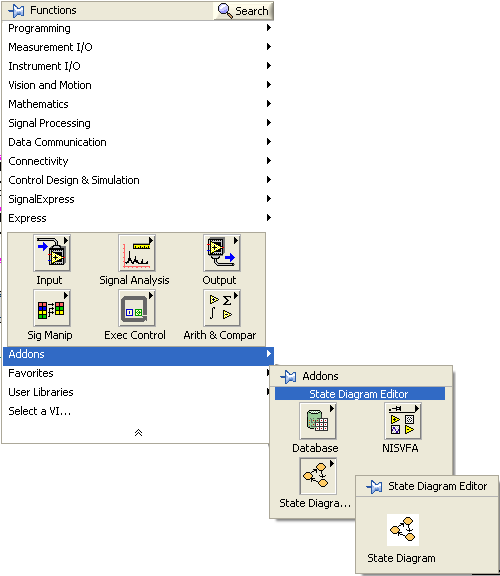
I do not recall installing it for LV 8.5. I did install it under LV 8.5 Beta (It installed under the State Chart Beta install) but I had deleted that. I can't explain why I see the SDE in palettes.
Ben
-
QUOTE(tcplomp @ Nov 19 2007, 09:00 AM)
I noticed recently that the latest SSP release (august 2007) that came with LV 8.5 didn't cary the State Diagram Editor on the toolkit CD.I have a feeling this has to do with the Statechart Module. I contacted to my local NI rep and he wasn't sure about the why of the removal.
Does anybody have an opinion of this silence kill of the SDE?
Ton
Check under you LV 8.5 add-ons. It appears to now be a freebie.
Unfortunately no bugs are getting fixed for the freebie.

Ben
-
I'm Websensed at work, so I don't get to enjoy LAVA posts with videos or audio all that much.
I took some time Friday night to watch the Benny LAVA and Girly Maaan videos from home. OMG this stuff is too funny! I nearly wet myself!
My wife thinks these are just wierd, but I found myself humming Benny LAVA and Girly Maaan while cleaning the leaves from my yard this weekend.
Thanks (I think
 )
) -
Scratch in the record of my brain.
After 24 hours these videos are still running in my head.
Can anyone offer any advice on a good shock therapist that works cheap?
Hmm.... Maybe I can can wire up an defribulator to a tin foil helmet...
"Benny LAVA ..... Girly man...."
Ben
-
QUOTE(Justin Goeres @ Nov 16 2007, 09:22 AM)
He first revealed Himself to LAVA on April 27, 2006 http://forums.lavag.org/Jesus-t3067.html&st=15&p=12032#entry12032' target="_blank">here...
-
QUOTE(Usman Shafiq @ Nov 15 2007, 05:35 AM)
REPORTED AS SPAM
-
QUOTE(Norm Kirchner @ Nov 13 2007, 04:29 PM)
Thank you Norm for this link. I am going to use it on the NI Forum to show how Lithium's updates are handled.
Ben
-
Side Note:
I will attempt to place the control for which an event is configured in the event case itself. This alllows me to double click on the control from the FP and quickly find the event for that control.
Ben
-
QUOTE(Aristos Queue @ Nov 14 2007, 08:53 PM)
This thrad is cross posted on the NI forums and can be found here.
Another way to increase the complexity of reverse engineering code would involve including a lot of flse leads. From my limited reverse engineering experience (no, not LV. I used to do crash dump analysis which was all reverse engineering with hardware failures thrown just to spice it up) you want to start by finding some reference point in the code that can be used to start walking through the code. This could be machine code that has a valid form of a loop, code loading, etc. To make it more difficult you could include a lot of false leads. One method of doing this involves imbedding bogus VIs within your VIs. In the "Obfuse Code" thread I presented a VI that had another VI imbeded in it as a constant on the diagram. The VI, when run, wrote the data to file and then opened and ran the VI using VI server. So to reverse engineer that VI you had to distinguish between the code of the top-level VI and the VI embedded there in. So if you included in your VI the raw data of 99 bogus VIs (that almost implemented your algorithm but all had fundamental flaws) then the reverse engineering would have to pick out the "1-out-of-100" to figure out what your code was doing. You could even through some encrytion into the data saved (in the block diagram) to add another hurdle they have to cross before they even get to the 1 in 100 chance.
Security in general
I used to work as a security consultant to the Federal Reserve Bank. The rule of thumb was "Make it ten times more expensive to break in than what was stored in the vault." So if your code is worth $100K then make it cost $1M to reverse engineer.
It also seems that a conversation with a lawyer ahead of times. It seems with the proper EULA the law suit should be stream lined greatly.
Ben
-
I think FSM would make a great LAVA mascot; I also like the jolly pirate fish

-
QUOTE(Aitor Solar @ Nov 13 2007, 01:26 PM)
My Picture looks almost the same...
VI Server is still VI Server...
EDIT: If I right click on a property node and klick on "select class" then Vi Server is written VI-Server...
So I entered VI-Server istead of VI Server...
This way, a lot of property/involke node can created using the SWB.
However I still get errors on some property/involke nodes:
Application:Command Line Arguments
Application:Debug Name
etc...
-
Thank you guys for your answers

This week i'm home with my laptop from the company, so there is no ctrl key on the right hand side, but that's a good idea I'll get a usb keyboard !
I didn't know about the sticky key option, I'll try that.
Thanks again for your help
EDIT :
QUOTE(TobyD @ Nov 13 2007, 09:58 PM)
Press the "Shift" key 5 times in a row. This turns on "Sticky Keys" (You can also turn this feature on from the Accessibility Options in control panel). You can then press CTRL, ALT, DEL in sequential order, without having to press them all at the same time.WOW !!
The sticky key option is made for those who only have one hand ! It's what I need !!
-
I broke my left arm at a rugby game and my left shoulder is also really painfull at the moment so if anyone has a trick not to have to press at the same time "ctrl + alt + delete" because with just one hand I can't do it !
Great idea Microsoft !
PS : posted form a mac

-
QUOTE(Neville D @ Nov 13 2007, 12:56 PM)
Hi Ned,Our system consists of a VME computer (non-LV) that transmits line scan data to a windows PC running LabVIEW and Vision. The image data is about 500k, and once processed by the LV PC, the returned results are about 1KB or so.
We tried UDP, and it definitely is a LOT faster.. a few ms to transfer the data. But on the windows (receive) side, we seem to be missing packets inspite of having a parallel loop that simply reads the data and buffers to an Img buffer.
To the others that have replied with helpful comments:
Ben, and JFM,
I am in the process of experimenting with Nagle, and it might help on the transmit side (windows->VME) where the data is quite small and it takes about 10ms to just open a socket. Disabling Nagle on the VME didn't make any difference.
I will try experimenting with different packet sizes on the VME side.
LVPunk,
I have also tried increasing UDP packet size to 4k and it seems to work OK.
I have just got a quad-core machine and have upgraded to Gig-E. Preliminary tests are encouraging. The Gig-E with even a dual core allows us to use UDP without missing packets.
Also, going from 100MB/s to Gig-E seems to offer roughly twice the performance.
Will post more info for reference, later on.
Many thanks to all of you!
Neville.
Thank you for the update. You may know this already but a timed loop will let you spec which CPU the code runs in. The timed loop does not have to iterate, it can just hold the code you want to control whcih CPU it execute on (at least that is how it will work on LV-RT). This may help "hedge your bets" with keeping up on the UDP incoming. But short of trying to implement TCP/IP over UDP, there will always be a potential for missed packets.
If you get to a point were it looks like even the Gigabit E-net can't transport data fast enough, then you may want to look at SCRAMNet by Curtiss-Wright. It screams (both in performance and cost, ouch).
Ben
-
You might want to consider tinkering under the hood a bit and try modifying the Nagle example. By modifying the TCP socket's buffer size, you can let the OS buffer more and prevent the transport protocol from blocking.
I did this to increase the default buffer size for UDP sockets (8192 bytes) and it worked out well.
For all available options for tuning sockets under Windows, Google "winsock2.h".
-
 1
1
-
-
QUOTE(Michael_Aivaliotis @ Nov 12 2007, 11:29 PM)
...Can someone explain the difference between State Diagram and State machine?
...
I'll try and wait for correction*.
A State Machine is a programing construct that implements a state diagram.
A State Diagram is a drawing that illustrates the various states a process can be in and the conditions under which it will transition from one state to another. I have also heard them called "State Transition Diagrams.
This is illustrated in the State Diagram Editor. With the SDE you edit the SD and LV re-codes the state machine.
Ben
* Don't give up easy.

-
QUOTE(Aitor Solar @ Nov 12 2007, 10:49 AM)
As requested, here is this simple tool intended for providing an easy way of calling properties and methods. I thinks it's pretty intuitive and works as other similar applications. Select the LV version, the class and the desired properties or method. Press "copy" to have the function in the clipboard and paste it in a block diagram.-
The description box doesn't show anything, because I haven't found a way of programmatically retrieving it. Any idea will be welcome.
-
Some properties can't be created this way. For example, try Generic -> Owner and you'll see the deprecated property is created instead.
-
Maybe not all properties and methods are included and can be some repeated. You can play with the txt files to add and try ned props/meths.
-
The search capability was added as an afterthought and I would prefer to have it better integrated. But still useful.
I tried to edit the txt file and entered the german names but i still get the error 1113...
http://lavag.org/old_files/monthly_11_2007/post-1396-1194946722.jpg' target="_blank">
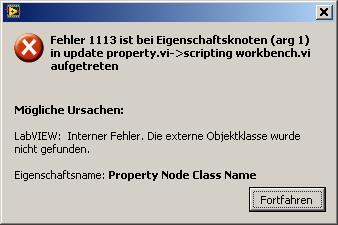
Have you any Idea?
Martin
-
The description box doesn't show anything, because I haven't found a way of programmatically retrieving it. Any idea will be welcome.
-
QUOTE(bono02 @ Nov 12 2007, 03:57 AM)
Hello
I'm using the PXI 7358- 8 Axis Motion Controller for Servo Motors, and Hydralic Cylinders...
What do you like to hear about the Motion Controllers?
Martin
-
QUOTE(ragglefrock @ Nov 13 2007, 04:42 PM)
Another snippet that'd be excellent in the http://wiki.lavag.org/' target="_blank">LabVIEWwiki

-
QUOTE(PeterB @ Nov 13 2007, 03:42 PM)
:thumbup: Thanks!
-
QUOTE(PeterB @ Nov 13 2007, 08:29 AM)
Hi Pete - can you please find a place for this juicy little tidbid in the http://wiki.lavag.org/' target="_blank">LabVIEW wiki?


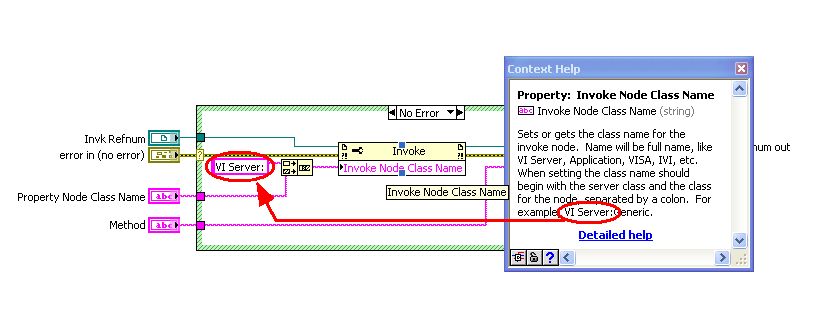
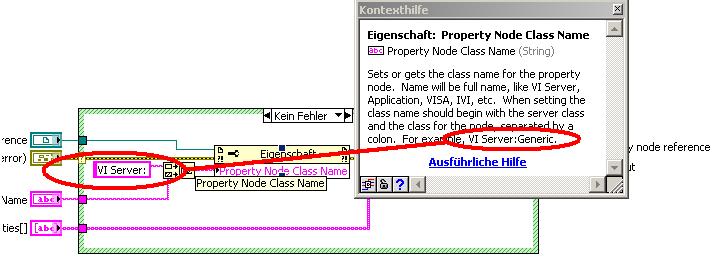
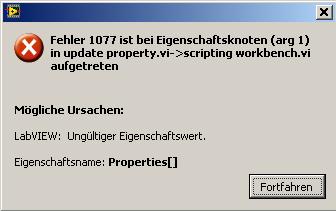
How to generate color with Loop Index
in LabVIEW General
Posted
Are you asking how to create a dialog that looks and functions like the color chooser for a graph, like the screen capture below?